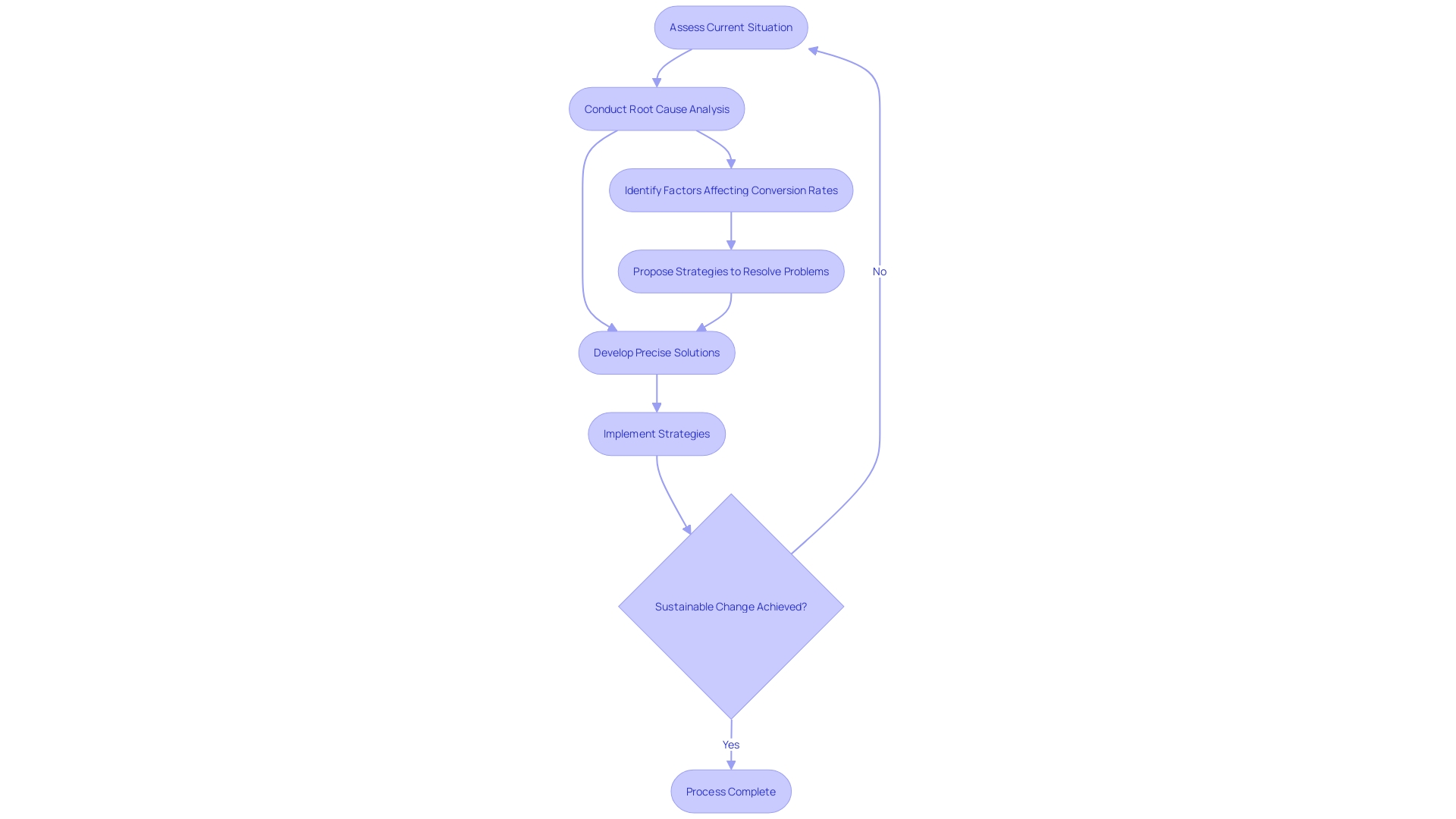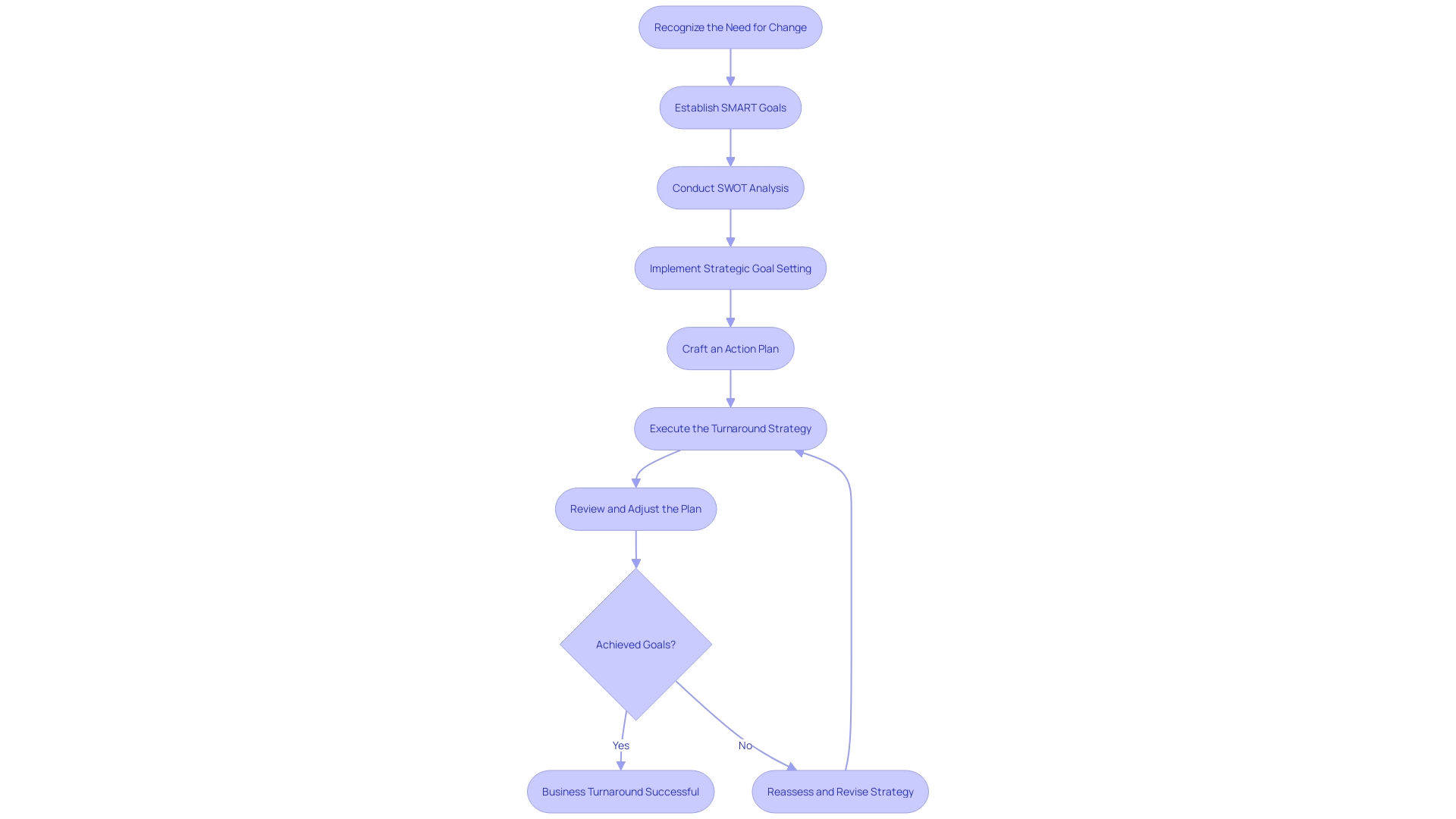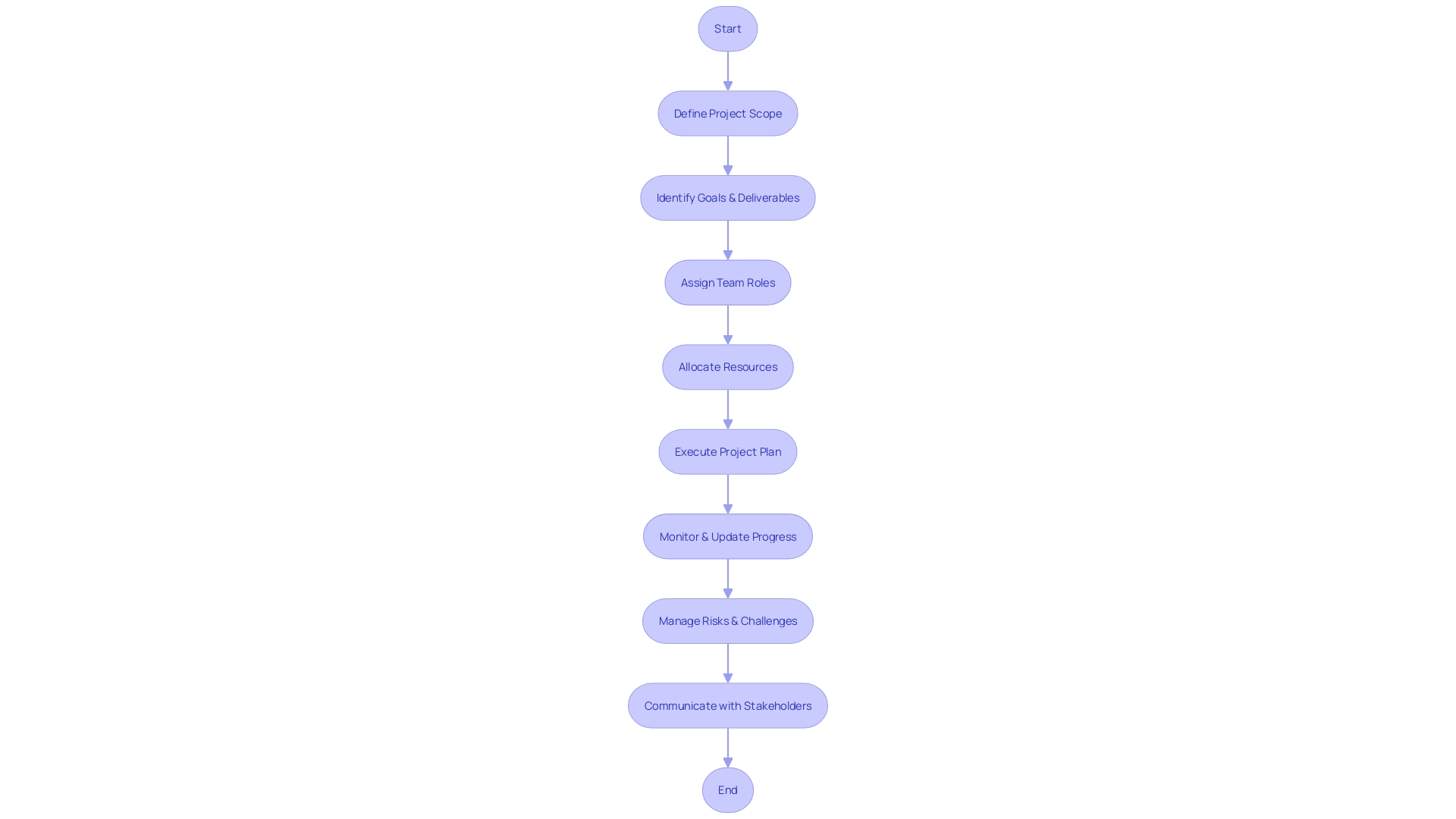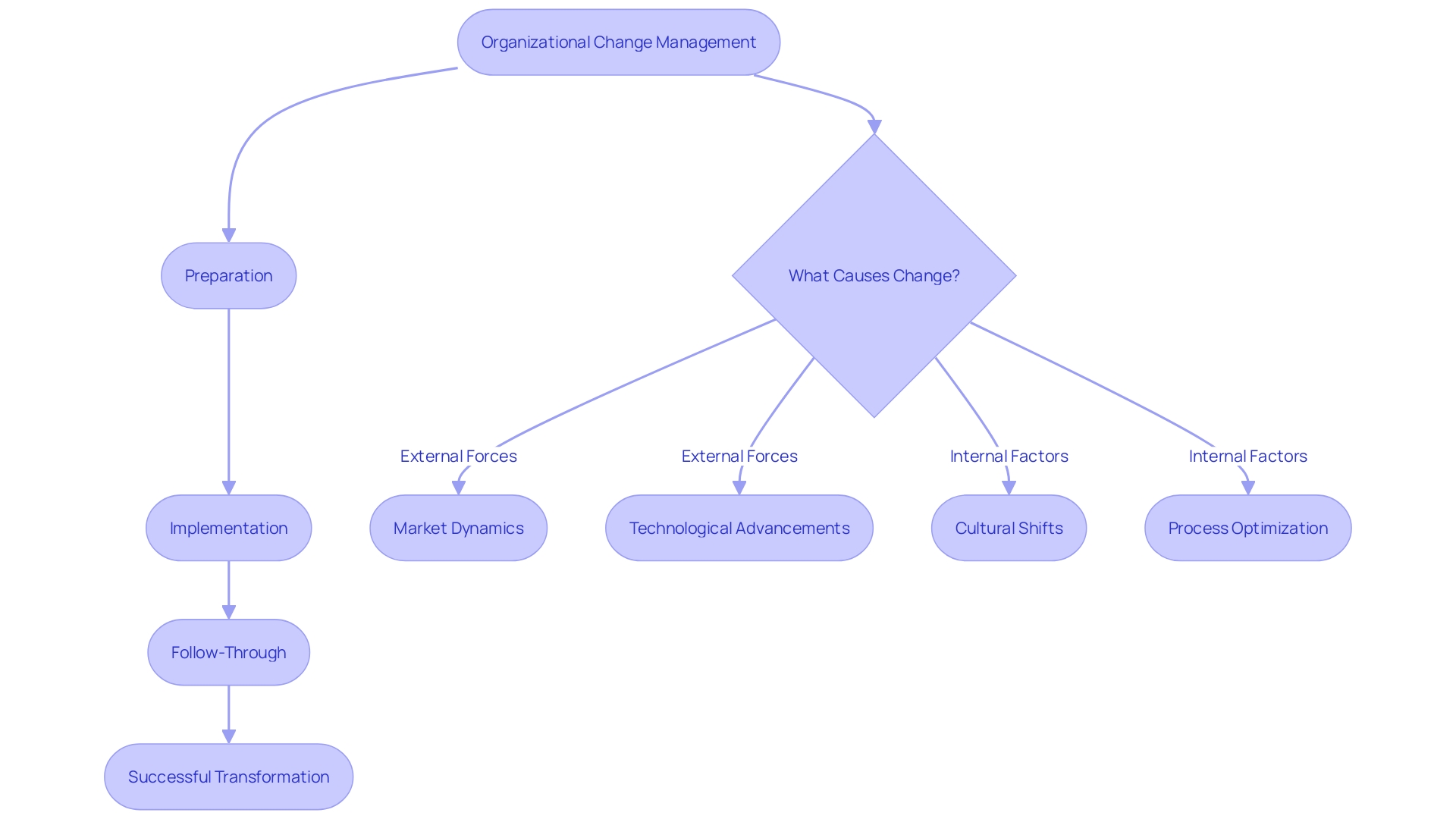Introduction
A Comprehensive Guide to Business Turnaround Strategies
Crafting a successful turnaround strategy requires a thorough assessment of your company's current state. Analyzing financial performance, operational efficiency, marketing strategies, and external economic challenges provides invaluable insights for developing a robust plan. Identifying the root causes of the business's problems is equally crucial, as it enables you to address core issues rather than superficial symptoms.
Setting clear goals and objectives, guided by SMART criteria, ensures a focused and strategic approach to the turnaround. A comprehensive turnaround plan, encompassing financial restructuring, operational enhancements, marketing initiatives, and organizational adjustments, serves as the guiding document for the transformation. Strategic planning and risk management play vital roles in navigating market trends and competitive forces.
The execution of the plan demands meticulous organization, precise action, and effective leadership. Monitoring progress against a well-structured project timeline, adjusting the plan as needed, and communicating the turnaround strategy to stakeholders are essential for success. Finally, evaluating results, sustaining improvement, and following best practices such as prioritizing customer needs, embracing continuous improvement, and preparing for future challenges ensure long-term growth and profitability.
By following these strategies and best practices, your business can overcome challenges and thrive in today's dynamic landscape.
Assessing the Current State of the Business
Crafting a successful turnaround strategy begins with an exhaustive assessment of your company's current operational, financial, and market standing. Delve into a financial performance analysis, asking questions like, 'Did we meet our initial financial targets?' Analyze your income statements, balance sheets, and cash flow statements to grasp your financial position, considering revenue growth, profit margins, cost management, and investment returns. Such a thorough evaluation informs future financial strategies and resource allocation.
Next, scrutinize your operations and supply chain efficiency. Address questions such as, 'How well did we manage operational disruptions?' and 'Were our operations and supply chain processes efficient?' Understanding these elements reveals your company's adaptability and innovative capacity, which are vital in maintaining a competitive edge.
Furthermore, examine your marketing strategies and customer engagement. Reflect on their effectiveness in reaching your audience and achieving goals, and evaluate campaign successes, marketing channel ROI, and customer base growth. The insights from this analysis are indispensable for aligning your business strategies and sharpening focus.
Lastly, consider external economic challenges and events that may impact your business, like those affecting UK businesses recently reported in the Business Insights and Conditions Survey. For instance, in the last year, a notable 21% of businesses with 10 or more employees exported, while 26% imported goods or services. These statistics highlight the significance of trade and resilience in the current economic landscape.
By addressing these critical areas, your business can map out a robust, informed turnaround strategy that not only identifies areas for improvement but also capitalizes on your strengths to steer towards recovery and growth.

Identifying the Root Causes of the Business's Problems
When delving into business turnaround strategies, it is crucial to not just assess the current situation but also to meticulously unearth the root causes that have led to financial or operational setbacks. This involves an intensive examination of the factors contributing to the company's challenges. A case in point is the story of BandIt, where repeated adjustments to the organization's culture document could not rectify an employee's behavior, ultimately leading to the difficult decision of termination. This exemplifies the necessity of addressing core issues rather than superficial symptoms to enact sustainable change.
Another example comes from the world of remote employment, where a myopic focus on cost optimization led to the loss of valuable employees and the repetitive cycle of hiring and training replacements, underscoring the need for balanced financial strategies that do not undermine workforce stability.
Furthermore, the experience of Delivery Hero illuminates the impact of process inefficiencies, as the IT service delivery team tackled the issue of employees being locked out of their accounts, which was causing considerable downtime and obstructed workflow. By resolving such procedural bottlenecks, companies can enhance productivity and reduce unnecessary delays.
In the context of e-commerce, a decline in shopping cart conversion rates could signal various underlying issues, such as user experience flaws or technical glitches. Root Cause Analysis (RCA) is an indispensable tool for identifying these fundamental problems, allowing for the development of precise solutions that not only remedy current issues but also fortify against future occurrences.
The importance of data in diagnosing business health cannot be overstated. It allows leaders to answer critical questions about the company's current state and the reasons behind specific trends. As stated by experts, data challenges are often rooted in people and process issues rather than technology alone, emphasizing the need for a holistic approach to problem-solving.
In essence, a comprehensive guide to business turnaround strategies must advocate for a deep and analytical approach to problem identification, drawing on both internal case studies and industry-wide experiences to formulate effective and enduring solutions.

Setting Clear Goals and Objectives for the Turnaround
For a business turnaround to be effective, it's crucial to establish SMART goals—specific, measurable, achievable, relevant, and time-bound objectives that guide the rejuvenation efforts. The electric vehicle company Rivian exemplifies this approach with their commitment to achieving net-zero emissions by 2040, a goal that encompasses sustainable material sourcing and waste reduction. Similarly, a major hotel leveraged its prime location to boost its food and beverage sales, showcasing the importance of strategic goal setting tailored to the business context.
When preparing for the transformation, conducting a SWOT analysis is invaluable. By understanding your company's strengths, such as a robust brand or skilled workforce, you can capitalize on these assets while setting future objectives. Acknowledging the need for continuous transformation, as Kurt Lewin's "unfreeze-change-refreeze" model suggests, is critical in today's dynamic business environment. This model emphasizes the importance of recognizing the need for change, moving towards new behaviors, and solidifying those behaviors as standard practice.
A study by principal analyst Bryan Solis indicates that market competition and growth opportunities are the leading reasons for organizational change, with 51% of businesses acknowledging this need. With technological advancements driving change, companies find themselves adapting approximately every two to five years to remain competitive. Crafting an action plan with clear directions, akin to a roadmap, enables a business to navigate from its current status to its desired future state.

Developing a Comprehensive Turnaround Plan
Crafting a robust turnaround plan is crucial for steering a troubled business back to profitability and growth. This plan is more than a mere proposal; it's the guiding document that will dictate the course of action. It should encapsulate tactical financial restructuring, pinpoint operational enhancements, delineate marketing initiatives, and propose organizational adjustments. For instance, when faced with a global health crisis like COVID-19, rapid and informed decision-making becomes paramount, as evidenced by HMRC's swift deployment of the Coronavirus Job Retention Scheme. Drawing inspiration from such agility, the turnaround plan must be devised to not only address immediate concerns but also to pave the way for sustainable long-term change.
The plan should reflect the lessons learned from case studies, such as the Statistics Under Pressure initiative, which highlights the delicate balance of speed and precision in data-driven decision-making. As Northvolt's strategic review demonstrates, focusing resources effectively and making tough decisions are integral to maintaining a competitive edge and financial stability.
Additionally, in the face of market competition, which prompts over half of the businesses to adapt within a two-to-five-year span, a turnaround plan must be forward-looking and adaptable. This involves setting clear objectives from the outset and building a shared vision of success, as emphasized by change management experts.
Moreover, the plan must be developed with a keen understanding of operational intricacies, akin to the resurgence of the COO role, emphasizing the importance of efficiency and growth. This strategic document, therefore, becomes a critical blueprint, guiding the business through choppy waters to a successful transformation.

Strategic Planning and Risk Management
Strategic planning and risk management are essential components of successful business turnaround efforts. By closely analyzing market trends and competitive forces, leaders can identify potential risks that may impact the effectiveness of a turnaround strategy. A recent study by Bryan Solis indicated that 51% of businesses recognize market competition and growth opportunities as primary drivers for change, with 41% citing competitive pressure as a key motivator for transformation.
A case in point is the challenge faced by California's utilities with catastrophic wildfire risks. The situation has parallels to businesses navigating uncertain markets and evolving risks. For example, the complexities and uncertainties of these utilities' risk landscapes, as well as the ambiguous cost and effectiveness of mitigation strategies, mirror the difficulties companies face in preempting and managing strategic risks.
Richard Rumelt's insights on strategy design can be particularly valuable in this context. He emphasizes the importance of anticipation, premeditation, and the orchestration of coordinated actions. The 'Strategy Kernel' he describes – consisting of diagnosis, guiding policy, and coherent actions – is central to formulating a robust strategy. This involves understanding the current situation, setting an overall approach to address challenges, and implementing a series of coordinated actions to realize this approach.
Furthermore, statistics show that technological advancements are a major impetus for change, with approximately 79.7% of businesses needing to adapt every two to five years to remain competitive. This necessitates a dynamic approach to strategy design, where anticipation and adaptability are key.
As indicated by the challenges faced by Toyota's Woven Planet venture, execution is as crucial as vision. Despite a sound strategy, the initiative struggled due to overly ambitious software goals and a misalignment with Toyota's timelines. This highlights the importance of setting realistic objectives and maintaining flexibility in strategy execution.
In conclusion, successful turnaround planning requires a well-designed strategy, informed by a thorough analysis of market conditions and potential risks, and the flexibility to adapt to technological advancements and evolving competitive landscapes. By incorporating these elements, organizations can enhance the likelihood of achieving desired outcomes and minimize potential setbacks.

Organizing and Executing the Turnaround Plan
The execution of a turnaround plan is a pivotal moment for any organization, demanding meticulous organization and precise action. It starts with an in-depth analysis of business processes and continuity requirements, leading to a business impact analysis and risk assessment. This groundwork helps establish critical objectives, such as the recovery time objective and recovery point objective, which are essential for a successful plan.
Utilizing a project planning timeline is indispensable during this phase. Such a timeline is a visual representation of tasks and milestones, clearly delineating when and how each activity will unfold. This ensures that the project advances in a structured, systematic manner and meets its goals punctually. Moreover, a timeline fosters enhanced coordination, enabling teams to monitor progress and communicate effectively with stakeholders, thus managing risks and addressing potential challenges proactively.
In crafting a change management plan, it is vital to focus on specific, measurable objectives and key results. A well-conceived plan serves as a yardstick against which change is gauged, taking into account the project's scope, schedule, and budget. This dual focus on institutional transition and project-specific progression ensures that the turnaround plan is comprehensive and adaptable.
Leadership during this time is crucial. As noted by emergency management professionals, crisis leadership involves making decisions with far-reaching consequences. It requires the ability to listen, understand, and act decisively. Such leadership is about steering the team before, during, and after the crisis, ensuring everyone is aligned with the turnaround objectives.
Statistics highlight the urgency of adaptability in business, with over 79.7% of businesses needing to adapt every two to five years to remain competitive, largely due to technological advancements and market pressures. A structured approach to listening, assessing, and implementing change is paramount. This approach should engage all stakeholders, ensuring the effective execution of strategic pivots or business model adjustments.
In practice, Project Open Hand's initiative to maintain adequate staffing across multiple departments while respecting employee needs illustrates the significance of an organized, flexible approach to resource allocation and scheduling. Similarly, pinpointing key areas that could hinder an organization, such as unrealistic KPIs or decision-making processes, can help maintain momentum and adaptability during the turnaround effort.

Assigning Roles and Responsibilities
The successful implementation of a turnaround strategy hinges on meticulous planning and coordination. A project timeline is a powerful visual tool that outlines the sequence of tasks and milestones, offering a structured approach to achieving the turnaround objectives. By establishing clear start and end dates for each activity, a project timeline facilitates communication among stakeholders, and aids in managing risks and challenges. It's crucial to leverage this tool to delegate responsibilities effectively across the team, ensuring that each member understands their role and is accountable for their contributions. The timeline not only serves as a guide but also as a benchmark to monitor progress and maintain the momentum needed to steer the project toward its end goal. This strategic clarity and shared understanding of expectations enable the team to execute the turnaround plan with precision and confidence.

Monitoring Progress and Adjusting the Plan
To ensure the success of a business turnaround, regularly tracking the progress against a well-structured project timeline is crucial. A project plan and timeline set the stage for systematic progress, delineating when key activities should commence and conclude. It serves as a dynamic tool for planning, coordination, and monitoring, helping to manage potential risks and streamline communication with stakeholders.
The implementation of the turnaround plan benefits from this visual roadmap, which clarifies objectives and provides structure. It's not just about following a schedule; it's about embracing preciseness in planning, which can significantly influence the overall advancement of the project. By utilizing a timeline template, deviations from the planned trajectory can be promptly identified, and necessary adjustments can be made swiftly to stay on course.
Flexibility and adaptability become vital traits in this phase, as the turnaround strategy may need to be fine-tuned in response to new insights or unforeseen challenges. These adjustments are informed by an ongoing review of key performance indicators, which are instrumental in assessing the effectiveness of each strategy and ensuring that the organization remains aligned with its long-term objectives.
Moreover, as the business landscape evolves, being adept at managing changes becomes essential. Recent trends, such as the proactive management of environmental resources by Ipieca, underscore the importance of good practice and knowledge sharing in navigating complex project life cycles. In the financial realm, the nuanced understanding of core inflation figures, as evidenced by shifts in the US economy, demonstrates the need for a keen eye on external factors that can impact strategic decisions.
In summary, the consistent monitoring of the project timeline and KPIs, combined with the ability to adapt strategies as needed, are fundamental elements in steering a business back to stability and growth.
Communicating the Turnaround Plan to Stakeholders
A structured approach to organizational change management is crucial during a business turnaround. Project timelines, serving as visual representations of task sequences and milestones, are invaluable for guiding strategy implementation. These timelines facilitate not just planning and coordination but also stakeholder communication, ensuring that everyone understands the progress and challenges at each stage.
For instance, a project timeline offers a transparent roadmap, where activities are scheduled with clear start and end dates. This level of clarity is instrumental in fostering open communication, enabling stakeholders to monitor advancements and align their expectations with the actual progress. It's more than a schedule; it's a communication tool that encapsulates the strategy and action plan, ensuring systematic progression toward objectives.
Moreover, selecting a capable spokesperson is essential, especially when conveying significant changes or setbacks. A spokesperson's ability to deliver information with credibility and empathy cannot be overstated. This role is critical in maintaining trust, as stakeholders seek honesty and directness in updates.
Organizational change often stems from a desire to stay competitive amidst market dynamics or to leverage new technological advancements. An action plan, therefore, is not just a document but a commitment to a systematic transformation. It aligns with the overall strategy, addressing both internal and external forces that necessitate change.
In the context of customer service experience, every interaction forms a part of the communication strategy. This experience shapes stakeholders' perceptions and influences their support for turnaround efforts. Accurate and timely updates about changes, challenges, and achievements become a cornerstone in managing both customer and stakeholder expectations.
Lastly, understanding the need for change is a data-driven endeavor. With market competition prompting organizations to adapt at least every two to five years, communication strategies must reflect this dynamic environment. Stakeholders must be made aware of the pressures driving change, with a clear narrative that aligns with the broader action plan for turnaround management.

Evaluating Results and Sustaining Improvement
After setting a business turnaround strategy into motion, the next critical phase is the meticulous evaluation of the outcomes. This process is not a mere checkpoint; it is an ongoing journey of refinement that involves delving into key performance indicators (KPIs) and financial measures, alongside gathering and interpreting customer feedback. For instance, consider the case of a centrally located hotel that, despite its prime location, struggled with stagnating food and beverage sales. By prioritizing market understanding and implementing location-based strategies, they witnessed a significant surge in sales and positive reviews within the first week. Such a scenario underscores the importance of well-defined KPIs and a willingness to adapt based on real-time data.
The World Bank Group's initiative to streamline their corporate scorecard to focus on a reduced number of outcome-based indicators is a testament to the power of clear, targeted metrics. Emulating this approach, businesses can rally their teams around essential goals, providing full visibility and driving action towards tangible results. Moreover, the dire contrast between the costs of acquiring new customers versus retaining existing ones, where the latter can be up to 25 times less expensive and accounts for 65% of a company's business, further highlights the critical nature of customer-centric KPIs in ensuring sustainable profitability.
Ultimately, the true measure of a successful turnaround is not just the immediate uptick in performance but the establishment of a resilient framework that supports enduring growth and prosperity. It is the synthesis of diligent tracking, strategic adaptability, and customer engagement that propels a company forward in the long run.

Best Practices for Successful Turnaround Execution
To steer a business back on course, establishing an efficient project planning timeline is fundamental, as it acts as a compass for the chronological sequence of tasks and milestones. A well-crafted timeline is not merely a schedule; it's a strategic blueprint that facilitates communication, precision in planning, and allows for the meticulous coordination and monitoring of the project's health. This clarity and structure play a pivotal role in managing risks and ensuring that the project aligns with the desired outcomes.
Prioritizing the customer's voice is integral. Lean principles suggest that the 'North Star' of any enterprise should be the pain points and demands of the target audience. Reflect on the feedback and signals from both team members and customers to inform change decisions, including necessary business pivots or adjustments. A systematic approach aids in understanding and acting on these insights, which is vital for the vigorous execution of strategic shifts.
Moreover, an analysis by principal analyst Bryan Solis indicates that a staggering 79.7% of businesses must adapt their operations every two to five years to remain competitive. This agility and responsiveness to market conditions are propelled by technology advancements and competitive pressures. It's not enough to just plan for the present; companies must learn from the past and build robust processes for future challenges. This includes preparing for potential disasters by identifying, assessing, and prioritizing risks, and developing mitigation plans, as internal structural components often determine the success of a business more than external factors.
In essence, a successful turnaround is anchored in a proactive stance towards continuous improvement, with a laser focus on customer needs, an organized approach to change, and a readiness to navigate future challenges. Aligning with these best practices will not only facilitate a successful recovery but also bolster the company's resilience, paving the way for sustained growth and profitability.

Conclusion
Crafting a successful turnaround strategy requires a thorough assessment of the company's current state, including financial performance, operational efficiency, marketing strategies, and external economic challenges. Setting clear goals and objectives, guided by SMART criteria, ensures a focused and strategic approach to the turnaround.
A comprehensive turnaround plan should encompass financial restructuring, operational enhancements, marketing initiatives, and organizational adjustments. It must be forward-looking and adaptable, reflecting the need for continuous transformation in today's dynamic business environment.
Strategic planning and risk management play vital roles in navigating market trends and competitive forces. The plan must be executed with meticulous organization and precise action, monitoring progress against a well-structured project timeline and adjusting as needed.
Effective communication of the turnaround plan to stakeholders is crucial. Project timelines facilitate coordination and stakeholder communication, while a capable spokesperson conveys changes or setbacks with credibility and empathy.
In conclusion, a successful business turnaround requires a confident and action-oriented approach. By following these strategies and best practices, businesses can overcome challenges and thrive in today's dynamic landscape.




